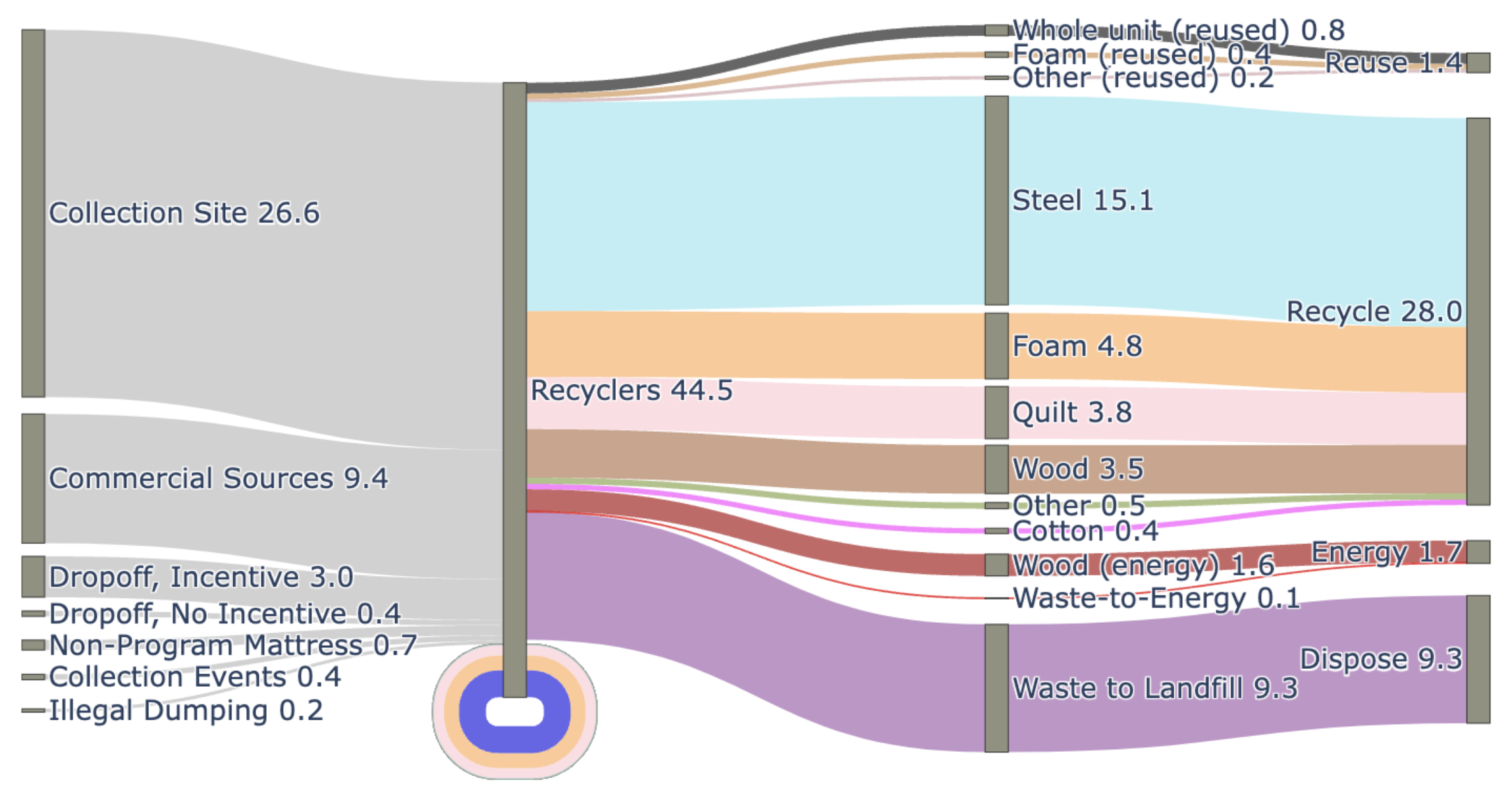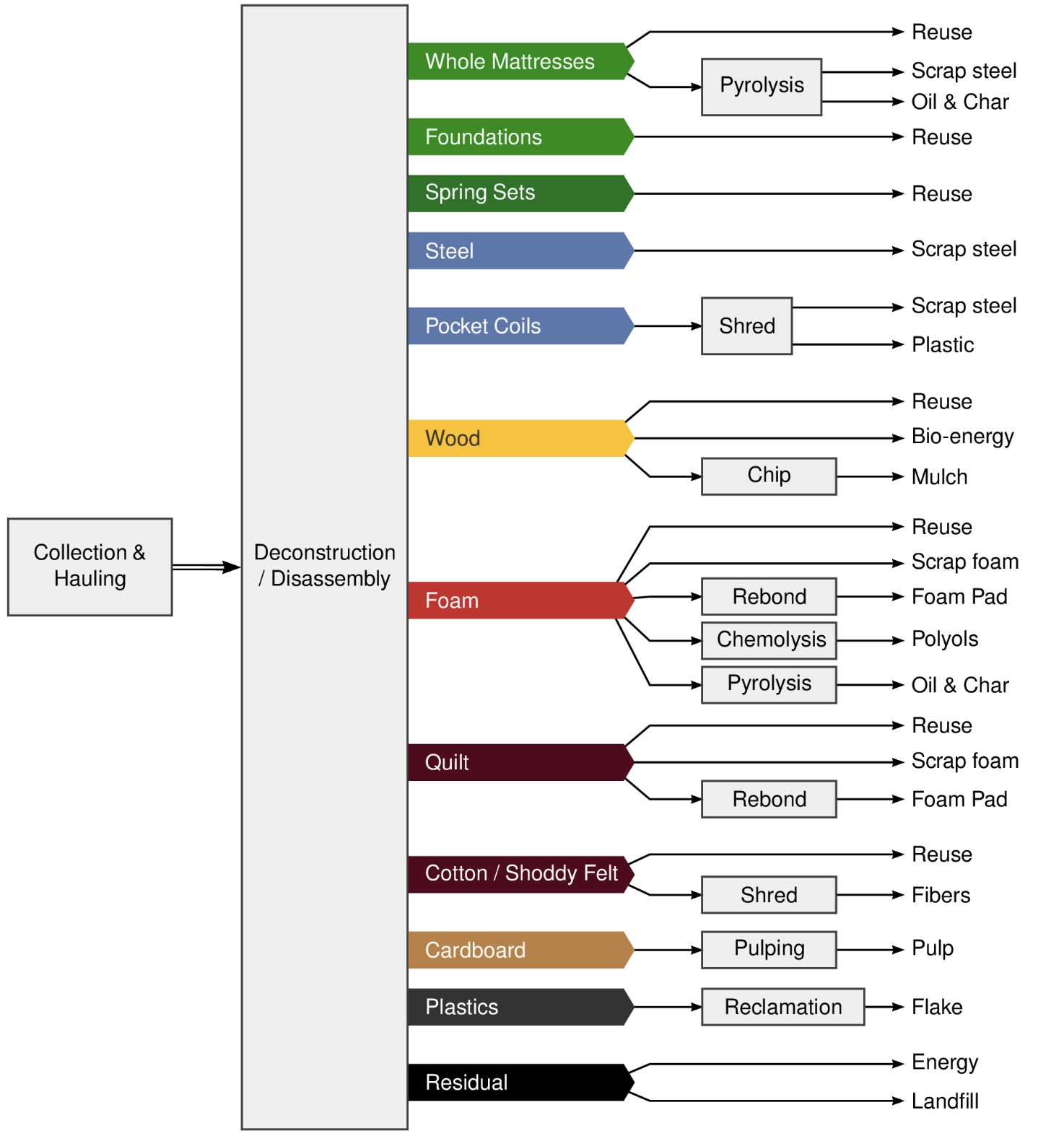Statewide mattress recycling
Mattresses and box springs (mattresses) are bulky, and thus can be challenging to properly manage at their end-of-life (EOL). At the same time, they contain materials that have real value. There are financial and environmental tradeoffs with different strategies.
We quantified the environmental impacts of operating the legislatively mandated statewide mattress recycling system in California. We also measured possible environmental benefits of the process through material recovery and rebirth.
In this study, we collected data from the recycling system manager, as well as individual recycling facilities. To include alternative recycling endpoints, we modeled several different end-uses for recycled foam and recycled wood. To account for the bulky nature of mattresses, truck process models were adjusted to provide a more realistic estimate of fuel use in trucks collecting mattresses. This provided the client with on-the-ground insight required to most effectively explore freight enhancements to improve the efficiency of mattress collection.
Material Flow
This figures shows the flow of mattresses and mattress-derived material through the recycling system (from left-to-right). The thickness of the lines represents the mass of material (thousand metric tonnes, kt).
Nodes on the left represent different collection types. Mattresses are delivered to recyclers, where different types of materials are produced as output. The nodes on the right represent different categories of fate (recycled, reused, energy conversion, disposal). The “loop” at the bottom of the “Recyclers” node indicates mattresses and material transferred between facilities.
25 individual processing models were developed
Mattress recycling was modeled from collection, all the way through to the final factory gate, where the mattress-derived material has been incorporated into a product. The specific fates are listed on the right.
To account for possible benefits of recycling, a substitute product was defined for each fate.
In addition to current practice, multiple alternative practices were included, to account for baseline conditions and available alternatives.
Net impact of the recycling system is likely a savings of over 20,000 tonnes CO2eq
Incurred impacts of the recycling system, by life cycle stage (emissions only)
Collection, Deconstruction (CA Recyclers), and Landfilling of residuals were all roughly equal contributors. These processes occur under the direct influence of the client. Further downstream processes were also included. The downstream process of rebonding foam was the largest single contributor of emissions in the overall recycling system.
Impacts by stage
It all begins with an idea. Maybe you want to launch a business. Maybe you want to turn a hobby into something more. Or maybe you have a creative project to share with the world. Whatever it is, the way you tell your story online can make all the difference.
Make it stand out.
It all begins with an idea. Maybe you want to launch a business. Maybe you want to turn a hobby into something more. Or maybe you have a creative project to share with the world. Whatever it is, the way you tell your story online can make all the difference.






